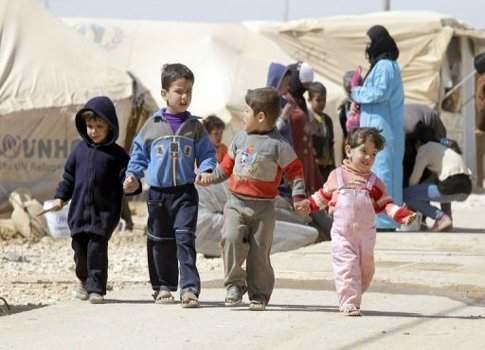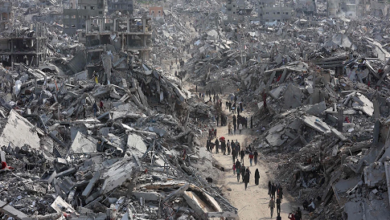What can I do to help children in refugee camps gain access to education? What role can technology play in facilitating it?

There are over forty-three million refugees worldwide, about forty-one percent of those refugees are children according to the United Nations (U.N.) ; meaning that there is a great need for education. Providing refugees with education will simplify their integration into any society and allow them to be more self-sufficient. To help children in refugee camps gain some sort of educational foundation would be a step in the direction of ridding the world of these camps. The issue at hand is the process of giving these camps sustainable and effective education that would provide positive results. That is why technology would be the foremost resource to use, as it is easily monitored and developed. Previous experiments and already existing alternative learning programs should be the basis of dealing with this crisis. The point is to not come up with new ideas that require testing and time, but rather to enhance prior premises. I can help children in refugee camps gain access to education by enhancing learning programs and finding alternative ways to deal with the lack of resources at refugee camps through the use of technology and currently existing experimental results it is entirely possible to provide education to children in refugee camps.
Organizations such as Lebanese Alternative Learning provide a modified version of education for those unable to attend a school with a set curriculum. Their mission is to “create multilingual, user-friendly, innovative and adaptable tools that are accessible to all organizations working to provide quality education in Lebanon, and that can be used in both formal and non-formal educational settings (OnGood, LAL) . There are various non-profit/government organizations with similar goals, and harnessing these aims or collaborating with such organizations would make the process of giving education to children much more likely. The reasons being: NGOs have sponsors willing to donate, have valuable and useful connections, communicate easily to the public, are the most innovative and are able to provide local action; thus, speeding up the process. The genius and experimentation of Elon Musk as well as his non-profit organizations should also be applied, more specifically the use of solar powered technology, which would ensure that technology can actually be used in refugee camps and that there is safe and beneficial monitoring of technology. Investing in innovations and using resources that are currently in reach would be more valuable in the long run. Therefore, if the Western Union partnered with NGOs in various countries it would simplify the entire process of getting education to refugee camps.
The most effective way to ensure information is being learnt successfully is through the use of technology. A study done by Sugata Mitra proves that children are hard wired to experiment and develop an understanding of anything in groups if given long enough; this ideology should be adhered to, but with a few enhancements. The children in refugee camps should be given technology with an alternative curriculum; however, using the teachers who are also refugees to guide those students will enhance the retention of information. The alternative education can be delivered to the camps on a hard drive that would contain lessons presented on videos, the written information, practice question and an end of unit test. Children would then be given access to these devices in groups, and follow the set curriculum, while working with each other. These hard drives should be able to connect to at least a dozen computers or individual tablets. New information should be presented every three months on different hard drives in order for the previous hard drives to be evaluated by the NGOs involved. By using teachers already present in these camps as well as using appropriate and adaptable technology, giving education to children in refugee camps will give them a better chance to become self-sufficient and accomplished citizens .
The details involved in achieving the notions set above are vital, especially those to do with the technology involved. The technology used would need to be solar powered to make the process of incorporating technology into the alternative educational system plausible. The information stored on hard drives would have the curriculum, but would also have videos of various teachers giving lessons on certain subjects, which would be modeled after Khan Academy; whereby teachers or students at schools provide these video-taped lessons. There should also be different hard drives with different grade and difficulty levels to cater to those with fewer or more abilities in regards to understanding or retention of information. The next step would be to determine the level at which the child is performing, the teachers present should monitor the involvement of each student and decide whether they should be moved to a higher or lower grade level and work in different groups. The number of tablets and computers given is vital to encourage group work. Referring back to the study made by Sugata Mitra, the children must work collaboratively, but with a limited amount of reliance on help from an expert, and be given challenging levels of education.
To conclude, giving children in refugee camps education is a difficult task but one that is achievable. NGOs are the best way forward to tackle this issue and its difficulties. There have been attempts to create alternate learning programs by these NGOs, which have been successful in different circumstances but can be applied to the situation at hand. Using the results of Sugata Mitra’s experimentation and the success of a program such as Khan Academy, solar powered technology is the best resource to be used. I believe I can help give children in refugee camps access to education by using the ideas discussed in this essay. The ideas I have presented have been successful in a large amount of cases and are the most likely to provide the best results, because these children deserve the best. Those forty one percent must be given an opportunity to be the best they can and in some cases make a difference in the world or how we perceive it.
1- “Global Issues at the United Nations.” UN News Center. UN, n.d. Web. 03 Nov. 2016. http://www.un.org/en/globalissues/briefingpapers/refugees/
2- “Lebanese Alternative Learning.” Lebanese Alternative Learning. N.p., n.d. Web. 02 Nov. 2016.
https://www.ongood.ngo/lebanese-alternative-learning-/638
3- Rao, Rajiv. “How Semi-literate Children in a Remote Indian Village Taught Themselves Molecular Biology | ZDNet.” ZDNet. N.p., n.d. Web. 02 Nov. 2016.
http://www.zdnet.com/article/how-semi-literate-children-in-a-remote-indian-village-taught-themselves-molecular-biology/
4- Sheet, Uis Fact, and No.18 June 2012. REACHING OUT-OF-SCHOOL CHILDREN IS CRUCIAL FOR DEVELOPMENT (n.d.): n. pag. Web.http://www.uis.unesco.org/FactSheets/Documents/fs-18-OOSC-2.pdf




